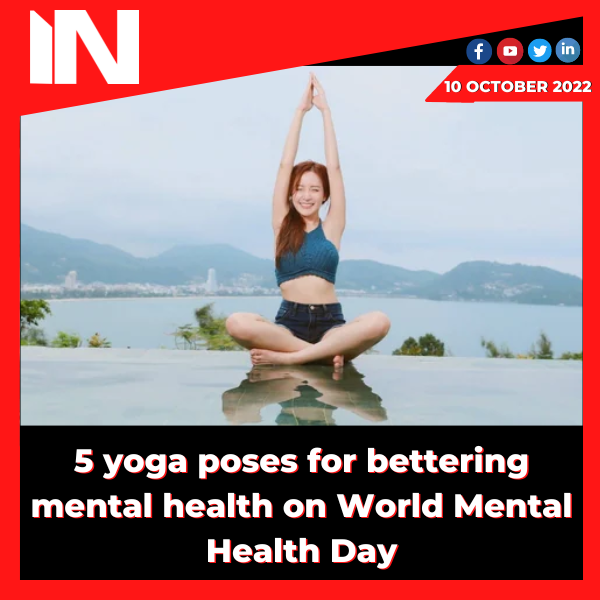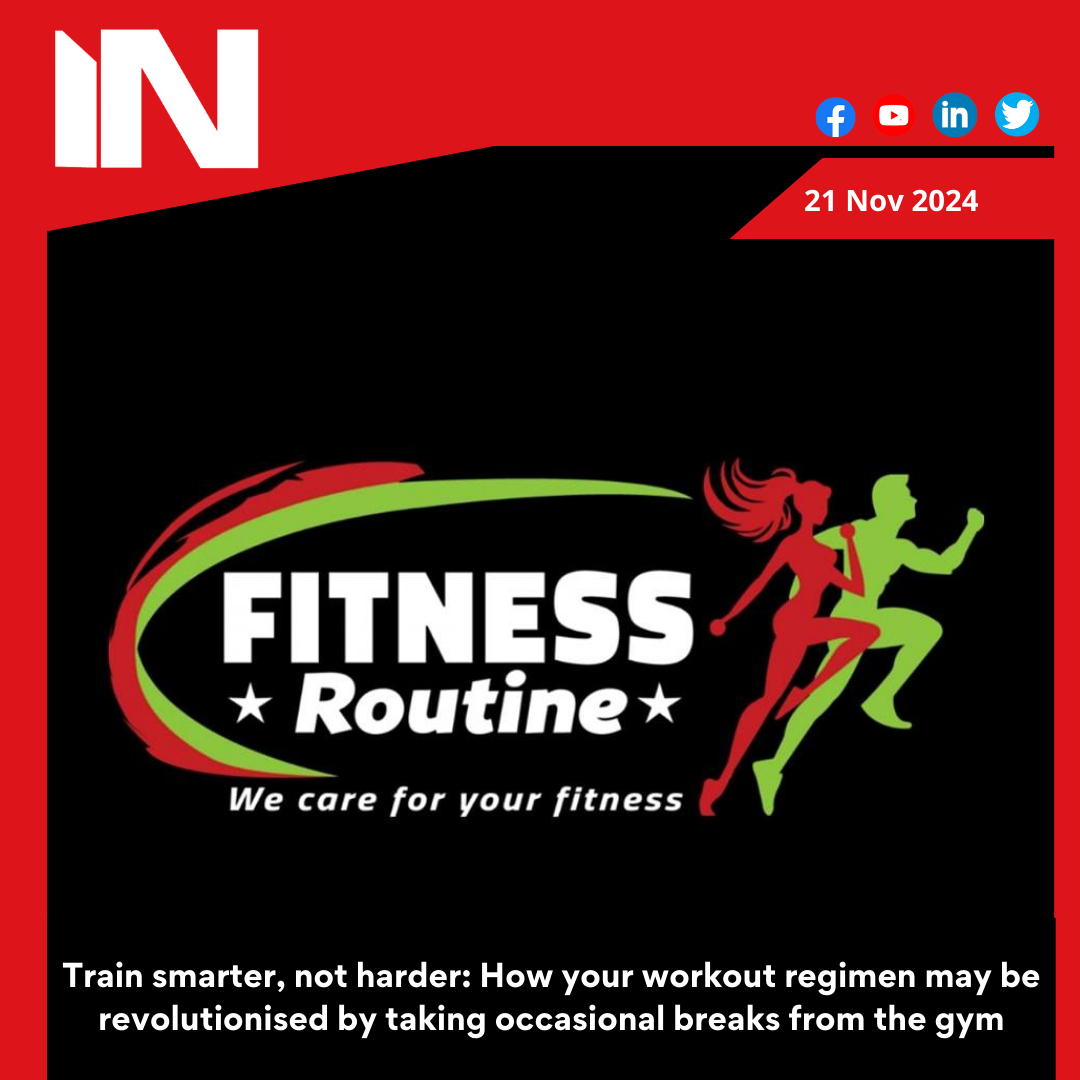health and remedies
5 yoga poses for bettering mental health on World Mental Health Day

Since the importance of mental health is not given the same attention as that of physical health, it is not a parameter in our health index. Everyone is hurrying to acquire material possessions, which is a side effect and symptom of rapid gratification, yet we fail to appreciate the trip because we are so focused on the result.
The incapacity to appreciate what we currently have is our greatest loss when we have poor mental health. Yoga, according to specialists in health and fitness, advises performing specific asanas or positions in the morning or the evening to enhance mental wellness.
Himalayan Siddha Akshar, the founder of the Akshar Yoga Research and Development Center, remarked in an interview with HT Lifestyle on World Mental Health Day, “How well-synchronized are your ideas, feelings, bodily sensations, and the environment around you? You can significantly improve your mental health by learning to start paying attention in the present. Everything actually starts and finishes in the mind. Regardless of how well you eat or exercise, your mental health affects how you appear on the outside. How mentally and physically sharp you are is reflected in your physical state.”
He argued that the mind and how we use it are fundamental to many practises, including yoga, spirituality, meditation, and mindful living, and that maintaining our mental health is crucial if we want to live full lives. He offered the following five yoga poses as excellent ways to enhance mental health:
Sukhasana, first (Happy Pose)
Method: Sit up straight in Dandasana with both legs extended, make the Siddha Mudra, and place your palms on your knees. The left leg should be folded and tucked inside the right thigh. The right leg should now be folded and tucked inside the left thigh.
Method: Starting with Samasthithi, place your flat hands just in front of you but without touching your feet. Put your fingers apart and in front of you. Bend your elbows just a little. Your knees should be in line with your armpits. Lean forward until your entire weight is supported by your arms. Maintain your balance while raising both of your feet gradually. Bring your feet together, maintain the straightest possible arm position, focus on one area, and hold this position for a while.
- Paschimottanasana, a forward bend when seated
Approach: Start with Dandasana. Make sure your legs are spread out in front of you with your knees slightly bent. Keep your spine straight while raising your arms upward.
Exhale and slant your hips forward to rest your upper body on your lower body. Take a firm hold of your large toes. Try to put your nose so close to your knees. For 30 seconds, maintain the position.
Chakrasana 4. (Wheel pose)
Lay on your back to start. Bend your knees and make sure your feet are firmly on the ground. Bend your arms at the elbows while holding your palms upward. Rotate your arms at the shoulders while placing your hands on the ground on either side of your head. Inhale deeply, squeeze your palms and legs together, and elevate your entire body in an arch. Look back and relax, letting your head gently hang behind you.
- The Child’s Pose (Balasana)
Step 1: Kneel on the mat with your heels down. Lift your arms above your head while taking a deep breath. Exhale as you forward-bend your upper body. Lay your head down on the ground. On your heels, your pelvis should rest. Beware of rounded backs.
Group Media Publications
Entertainment News Platforms – anyflix.in
Construction Infrastructure and Mining News Platform – https://cimreviews.com/
General News Platform – https://ihtlive.com/
Legal and Laws News Platforms – https://legalmatters.in/
Podcast Platforms – https://anyfm.in/
health and remedies
Train smarter, not harder: How taking occasional breaks from gym can revolutionise your fitness routine

Taking regular breaks from intense training, like deload weeks, helps your body recover, preventing fatigue and injury, and ultimately boosts fitness gains.
When it comes to getting fit, the idea of spending hours at the gym might come to mind, but many fitness experts argue that taking a “deload week” every six to eight weeks is actually key to improving your fitness gains. A deload week involves reducing the intensity of workouts to allow the body to recover from the fatigue and muscle damage caused by intense training.
While high-intensity training helps build strength and fitness, it can also lead to muscle strain, and without adequate recovery, these gains can’t fully materialise. Deload weeks give the body much-needed rest to repair and rebuild, ensuring continued progress. (Also read: Bhagyashree swears by this super easy exercise for instant leg pain relief and better mobility. Watch how to do it )
Why recovery is key for muscle growth
According to an article by The Conversation, intense exercise can cause tiny tears in muscle fibres, leading to inflammation that requires rest or low-intensity exercise to heal. This inflammation is essential for muscle growth and fitness improvements. However, without proper recovery, muscles remain in a state of slight damage, preventing inflammation from resolving. This chronic state of inflammation can hinder muscle function, reducing oxygen efficiency and impairing performance. Giving muscles time to recover through rest ensures they repair properly and are primed for continued progress, setting us up for greater success in our fitness journey.
Many gymgoers fear taking time off and are worried it will lead to a loss of gains. However, research shows that muscle genes have a “memory imprint,” which keeps them in a semi-prepared state. This allows muscles to respond more quickly and effectively to future training, promoting growth after a rest period. Even after extended periods of reduced intensity, up to seven weeks, muscular fitness can be restored to prime condition—and in some cases, surpass previous levels. Interestingly, recovery can occur twice as fast as it took to reach peak fitness initially, even if some strength is lost.
Taking time off from intense training is crucial to prevent muscle soreness and avoid overtraining syndrome. Overtraining occurs when the body doesn’t get enough rest, leading to prolonged fatigue, decreased performance, and mood disturbances. Symptoms develop gradually, making overtraining difficult to recognize until it’s severe. Rest is essential to avoid these issues and ensure long-term progress in training.
Role of overtraining syndrome and deload weeks
Overtraining syndrome is challenging to quantify due to its vague symptoms. Studies suggest it may affect as few as 10% of elite athletes, though rates could climb to 60% among highly competitive individuals. Recovery is essential for both fitness and overall health. When engaging in heavy gym routines, it’s vital to incorporate sufficient recovery time into your workout plan. Unlike rest days, which involve little to no exercise once or twice a week, deload weeks feature lighter training at reduced intensity—typically about 50% fewer workouts or a 20% drop in workout intensity.
Both rest days and deload weeks are essential for recovery and crucial to improving fitness. It’s not about choosing one over the other—they complement each other. For instance, intense training for marathons, Ironman, or CrossFit competitions requires weekly rest days alongside scheduled deload weeks. However, for recreational gym-goers exercising 1–3 times weekly at a moderate intensity, the recovery from this routine is often sufficient without the need for additional deload weeks.
Fitness influencers recommend incorporating deload weeks into training schedules every 4–8 weeks, aligning closely with the expert advice of 4–6 weeks. However, it’s crucial to listen to your body and schedule deload weeks as needed. If your performance plateaus or worsens, it may signal time for a deload. Training plans should be flexible enough to allow rest when required. Deload weeks not only enhance performance but also support overall health.
Disclaimer: This article is for informational purposes only and not a substitute for professional medical advice. Always seek the advice of your doctor with any questions about a medical condition.
Group Media Publications
Entertainment News Platforms – anyflix.in
Construction Infrastructure and Mining News Platform – https://cimreviews.com/
General News Platform – https://ihtlive.com/
-

 india1 month ago
india1 month ago‘My support will be with new J&K govt’: L-G Manoj Sinha ahead of Omar Abdullah’s oath-taking ceremony
-
.jpg)
.jpg) Politics1 month ago
Politics1 month agoNew BJP government to take oath in Haryana on Oct 17, PM Modi to attend
-

 Sports1 month ago
Sports1 month agoScore for the third day of the first test between India and New Zealand: Ravindra-Southee crushes IND, NZ leads by 299 at lunch
-

 TV1 month ago
TV1 month agoPrince Narula and Yuvika Chaudhary share first pic with newborn daughter from hospital. See post
-
.jpg)
.jpg) In News2 weeks ago
In News2 weeks agoSpiceJet announces 8 new flights to connect Jaipur with Varanasi, Amritsar and Ahmedabad
-

 Business2 weeks ago
Business2 weeks agoOpenAI buys new domain chat.com for over $15 million, it redirects to ChatGPT
-

 Entertainment.1 month ago
Entertainment.1 month agoMassive data breach at Game Freak studios reveals shocking new dark Pokemon movie plot
-

 Sports1 month ago
Sports1 month agoIndia vs New Zealand LIVE Score 1st Test Day 3: Ravindra-Southee carnage flattens IND, NZ lead by 299 at Lunch



.jpg)



















